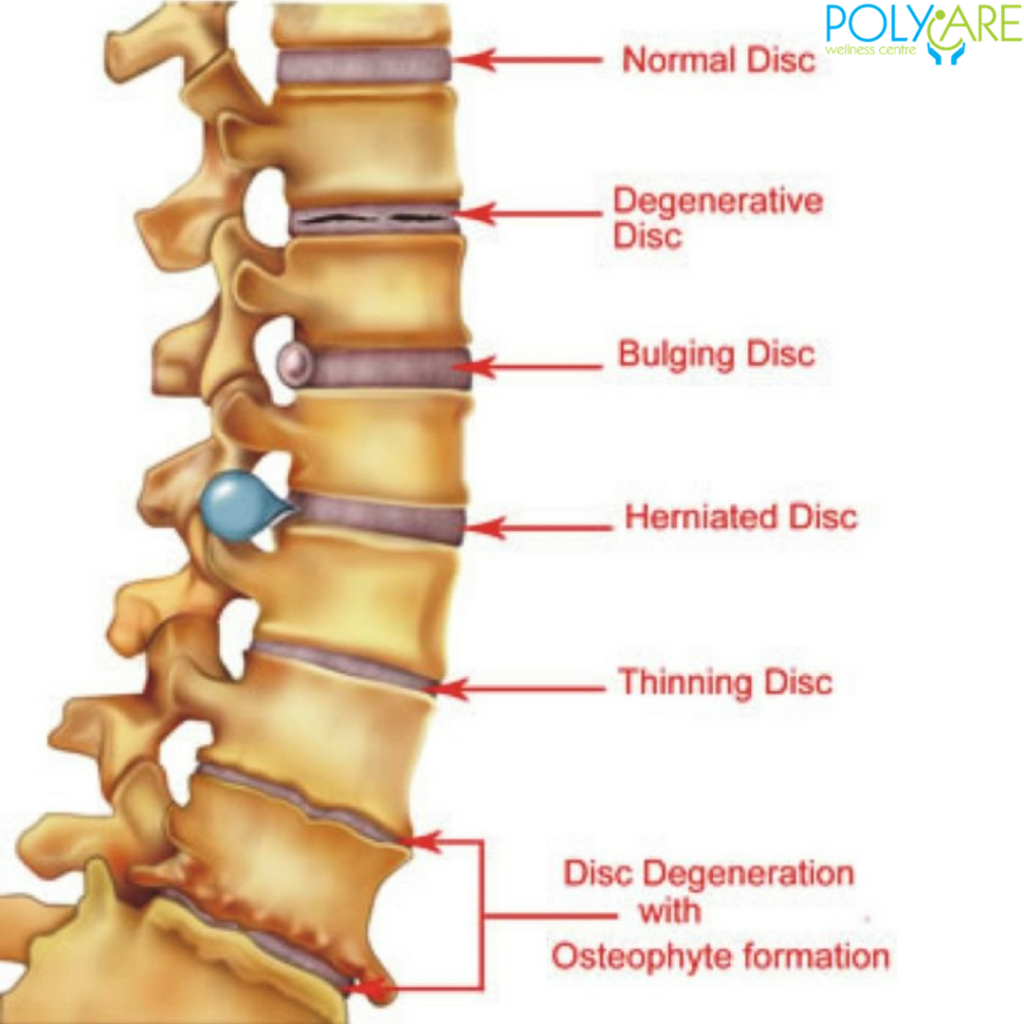Degenerative disc disease is usually characterized by a severe or unbearable neck or back pain. Non-surgical spinal decompression, physical therapy and chiropractic manipulation are the most common treatment options.
Causes
The degeneration of one or several intervertebral discs is typically due to ageing or a severe injury that can cause chronic pain and, over time, the condition is called degenerative disc disease.
It can affect the cervical and lumbar regions of the spine. The deterioration of the fluid in the central part of the intervertebral disc is perhaps due to the rupture of continuous ligaments and causes this condition to occur.
If left untreated, this disease can lead to more serious conditions such as bone spurs, tumours and herniated discs.
Symptoms of degenerative disc disease
The first symptoms of this disease are usually a numbness and tingling sensation in the legs or neck. The disease is confirmed by two critical symptoms: discogenic pain and bulging disc.
Discogenic pain
Mechanical or structural pain caused by the damaged intervertebral disc is called discogenic pain. It can affect both the neck and lower back, depending on the region (cervical or lumbar), where degeneration occurs.
Apart from the lower back, the patient may feel that the pain is emanating from the buttocks or even the thighs. In most cases, pain occurs when parts of the body that are compatible with the degenerative disc are stressed.
This occurs when degeneration causes the inner material of the disc to leak out, irritating the nerves of any of the walls of the disc or the spine and hampering its regular function.
Disk bulge
If there is cervical degeneration, the bulging of the intervertebral disc can cause pain in the neck that radiates through the shoulders and arms.
In the case of lumbar degeneration, protrusion of the disc can cause pain in the lower back, legs and hips.
The fibrous portion in the outer region of the intervertebral disc weakens over time due to degeneration.
If any pressure is exerted on the central core of the disk, it will extend to the outer edge and will cause the disk to expand or bulge.
Effective Treatment Procedures
Surgery is considered as the last resort for this disease. Fortunately, there are several effective non-surgical treatment options for degenerative disc disease:
Non-surgical spinal decompression
This is a type of traction treatment performed with spinal decompression machines. It is a proper placement through the phases of distraction and relaxation.
The goal is to apply negative pressure on the discs to separate them and create a vacuum that can help remove the material from the disc inside the disc.
The pressure also simulates the blood supply and stimulates the supply of nutrients to the base of the spine for healing. Each session lasts about 20 to 25 minutes. Rehabilitation exercises are also a part of the treatment.
Physical therapy
Degeneration can weaken the spine to a greater extent and cause repeated tearing of the ligaments that support the vertebra.
Physiotherapy exercises can strengthen the back, neck and core muscles so that they can provide better support for the spine.
There are several therapeutic methods and exercises that are part of the treatment of physical therapy, such as massages, myofascial release, traction, application of ice or heat, and more.
In addition, ultrasound therapy can be used to increase blood flow, and transcutaneous electrical nerve stimulation (TENS) to interrupt pain signals.
Chiropractic manipulation
Chiropractic manipulation can raise pressure on sensitive tissues within the disc and facilitate movement in order to restore blood flow and reduce muscle tension. It can also induce chemical reactions in the body that can work to reduce back pain.
In addition to these treatments, pills and injection medications are also used to relieve debilitating pain.
Normally, nonsteroidal anti-inflammatory drugs, muscle relaxants and narcotic analgesics, prolotherapy, and radiofrequency ablation are also effective in controlling discogenic pain.
You might also want to read: Spinal disc herniation

